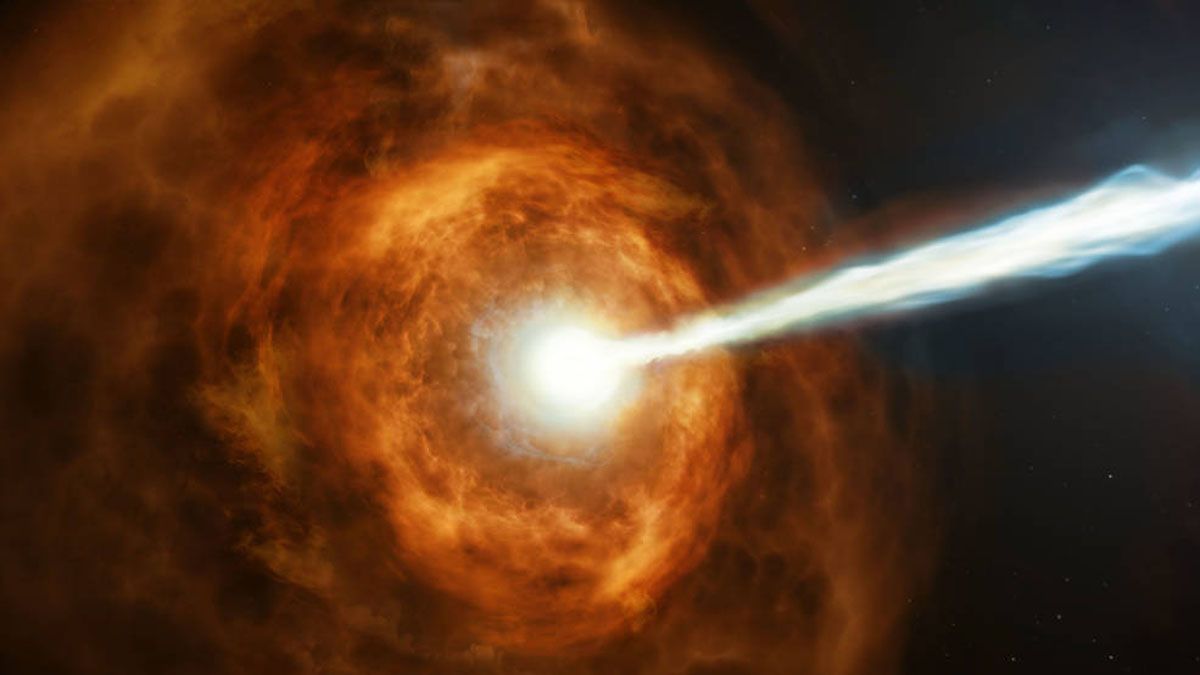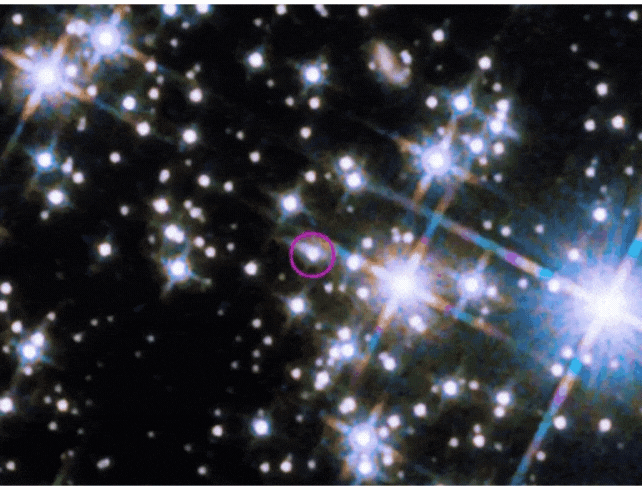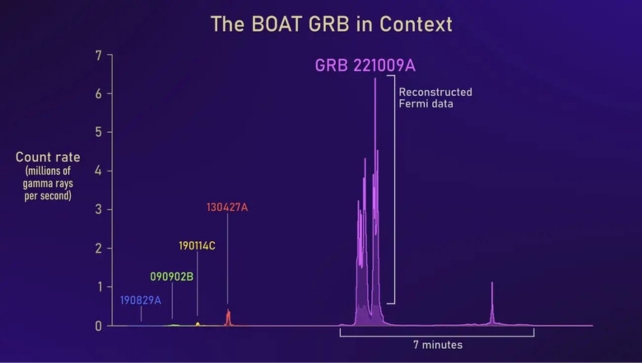Shine bright like a… gamma-ray?
A gamma-ray burst that recently hit our Solar System was so bright, it temporarily blinded gamma-ray instruments in space, according to a N.A.S.A release.
Scientists say the gamma-ray burst (GRB), the most powerful type of explosion in the Universe, was 70 times brighter than any previously recorded event.
They dubbed it “the BOAT,” or “brightest of all time.”

What is a gamma-ray burst?
A GRB is basically a black hole’s first breath into existence. And it’s a spectacular one.
When a supermassive star nears the end of its life – when it’s no longer generating enough fuel in its core to support its sheer mass – it collapses under its own weight, forming a black hole.
Two things happen during this process: First, the collapse generates an explosion called a supernova. Second, the resulting black hole is born into a massive cloud of residual gas and dust, where it proceeds to quickly gobble it all up.

What comes next has been observed many times but is still a scientific mystery as to why it happens: the black hole burps out two powerful jets of high-energy gamma radiation traveling at near the speed of light, in opposite directions.
These cosmic belches only last for a few seconds but are so bright, that astronomers have documented about 12,000 GRBs. And it’s one of these jets that struck our Solar System last fall.

The brightest GRB of all time
The Hubble Space Telescope’s Wide Field Camera 3 revealed the infrared afterglow (circled) of the BOAT GRB and its host galaxy, seen nearly edge-on as a sliver of light extending to the burst’s upper right. (N.A.S.A, ESA, CSA, STScI/A. Levan/Radboud University/Gladys Kober)
The burst, classified as GRB 221009A, was recorded on October 9, 2022. Because it blinded space instruments, they couldn’t accurately record it, so scientists weren’t sure how bright the burst was when it first reached our planet.
For the last several months, scientists worldwide – including in the US, China, and Russia – have culminated data from other instruments to measure and re-measure the GRB’s brightness, determining it was 70 times brighter than any other GRB event in recorded history.

The amount of gamma radiation from GRB 221009A is significantly greater than any other GRB on record. (N.A.S.A’s Goddard Space Flight Center/Adam Goldstein/USRA)
Researchers also examined the likelihood of an event like this happening again and reported that this sort of thing only occurs once every 10,000 years.
“GRB 221009A was likely the brightest burst at X-ray and gamma-ray energies to occur since human civilization began,” said Eric Burns, an assistant professor of physics and astronomy at Louisiana State University in Baton Rouge, N.A.S.A reported.
Oddly enough, the jets themselves weren’t the most powerful on record. What made the GRB so bright was the fact that the jets were narrow and aimed directly at Earth. So, we got a full-on view of it – sort of like a deer in headlights.
Other GRBs aren’t aimed directly at Earth, so we don’t detect as much of their radiation and they appear dimmer.
The researchers recently announced their findings at the American Astronomical Society’s High Energy Astrophysics Division and published the results in The Astrophysical Journal Letters.
But astronomers aren’t done. They’re hopeful that this GRB could help solve the mystery of why black holes burp out GRBs in the first place. One theory is already in place that the jets were powered by a magnetic field that the black hole amplified as it began to spin. (Yes, black holes can spin.)
Additional observations through the James Webb Space Telescope and Hubble Space Telescope are planned over the next few months.
This article was originally published by Business Insider.








